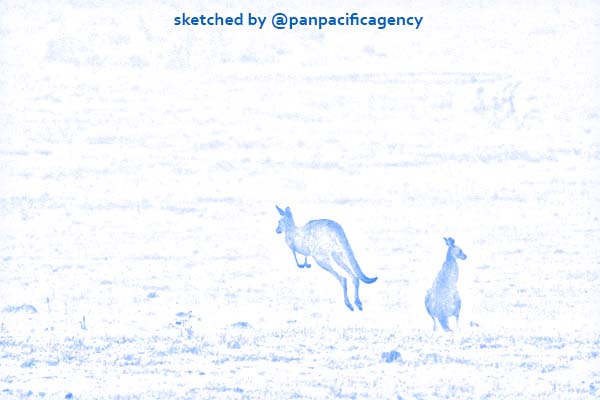Australia’s Great Artesian Basin water pressure on the mend as water take reduces

A kangaroo jumps in a field amidst smoke from a bushfire in Snowy Valley on the outskirts of Cooma in January. Sketched by the Pan Pacific Agency.
CANBERRA, Nov 11, 2020, ABC News. Water pressure in the Great Artesian Basin is recovering as more bores are capped, according to new research unveiled by the University of Queensland, ABC News reported.
The two-year research project involved more than 100 researchers to gain a better picture of how the world’s largest artesian system functions and how to manage groundwater stores.
The Great Artesian Basin spans almost 1.7 million kilometres beneath Queensland, the Northern Territory, South Australia and New South Wales.
The basin supports tens of thousands of people every day and, apart from rainwater tanks, is the only water source for more than 20 per cent of inland Australia.
According to the Department of Agriculture, Water and the Environment, the basin generates almost $13 billion a year and is a vital resource for 180,000 people, 7,600 businesses and 120 towns.
But uncontrolled water flow from bores and open earth bore drains has reduced water pressure and volume, threatening the health of ecosystems that depend on groundwater and limiting pastoralists’ new users’ access to artesian water.
The key research findings have been made public as part of the launch of the Great Artesian Interpretive Centre in Miles on Queensland’s Western Downs.
Wide-ranging look
“There are pictures from over 100 years ago of bores with water columns shooting into the air literally. Tens of metres into the air,” said Chief investigator Associate Professor Phil Hayes.
“We certainly don’t see that today, so we know much higher pressures were there in the past.
“But pressures have recovered as the amount of water that we are taking from the basin is reduced.”
A basin-wide coordinated approach to bore rehabilitation was proposed as part of the Great Artesian Basin Strategic Management Plan 2000 and led to the Great Artesian Basin Sustainability Initiative.
The upgrading of bores, decommissioning of bore drains and the installation of more efficient pipe drains have saved more than 250 gigalitres of water per year.
Kerry Mulholland, President of Miles Historical Village Museum which houses the new Great Artesian Basin Interpretive Centre, said the basin was central to the lives of people who live on the Western Downs.
“Finding groundwater in inland Australia has always been a challenge for people pursuing a life on the land and the Great Artesian Basin has been a lifeline to so many people over the years,” Mr Mulholland said.
“The launch of Stage One of the Great Artesian Basin Interpretive Centre project is exciting, and we will be building on this to bring an even better understanding of the Basin and its impact in our lives.”
Just the start
Associate Prof Hayes said while the Great Artesian Basin was a vast source of underground water, it was not endless.
“We need to move towards balancing our abstraction with the amounts of water that are naturally recharging,” he said
“There is only a relatively small amount of that is actually accessible.
“We do need to really think hard about our balance of how much water we take out versus how much water is going in.”
However, he said overall the management of the basin now was much better than it was 30 or 40 years ago.